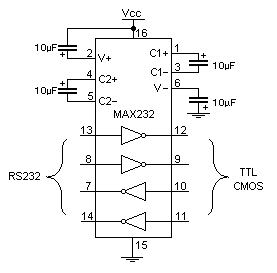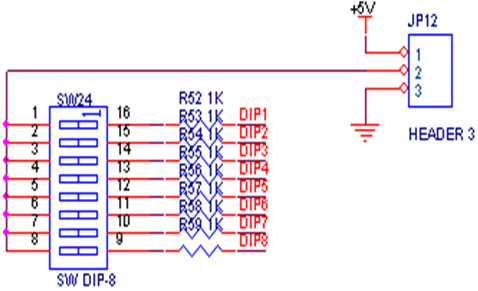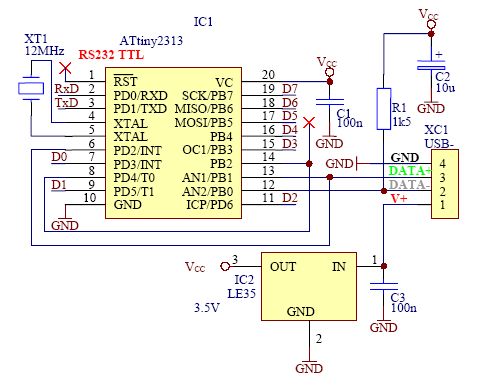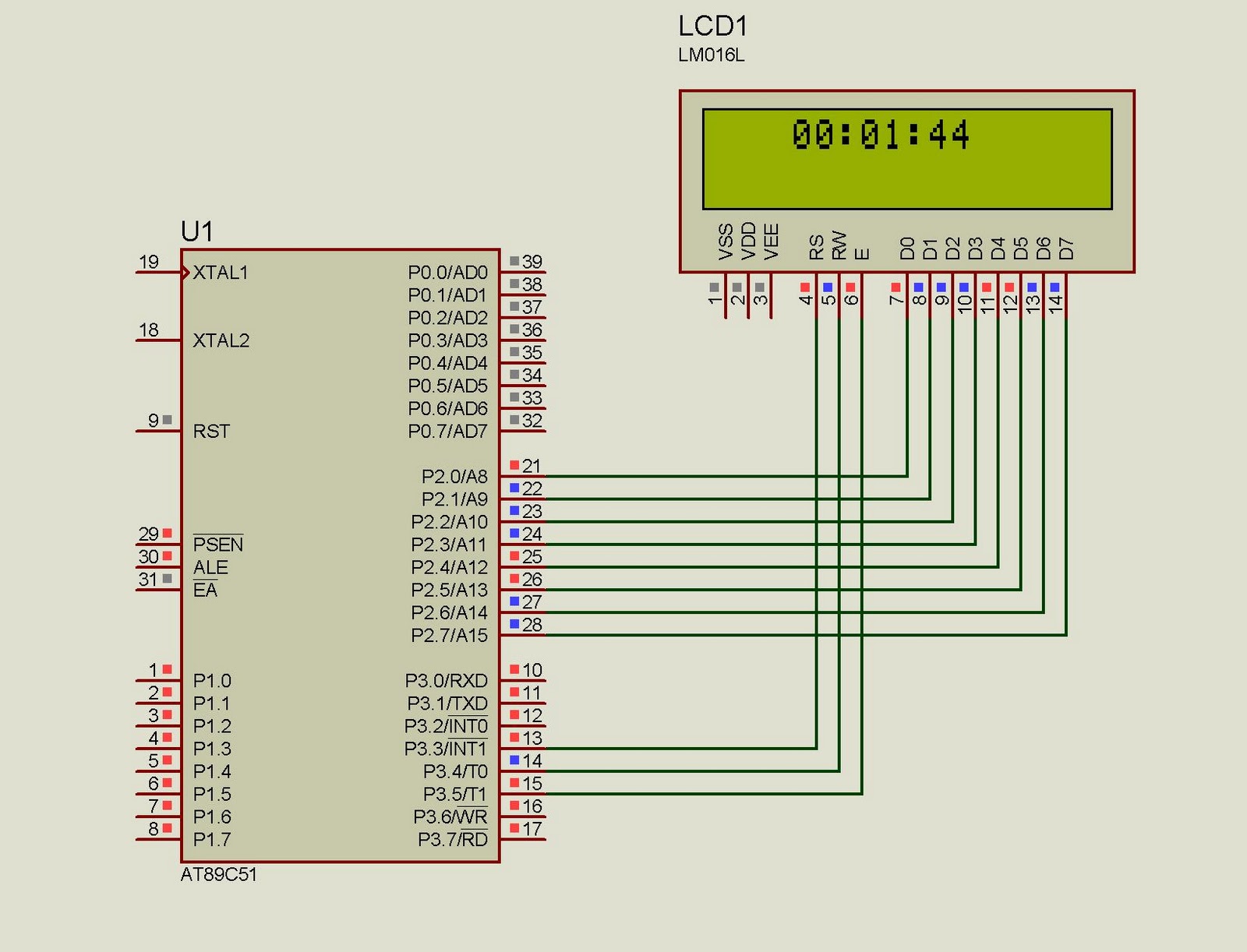
Microcontroller interfacing with RS 232

Standard serial interfacing of a microcontroller (TTL) with a PC or any RS232C standard device requires a TTL to RS232 level converter. A MAX232 is used for this purpose. It provides a 2-channel RS232C port and requires external 10µF capacitors.
The MAX232 is a dual driver/receiver designed for asynchronous communication between TTL logic levels and RS232 levels. Its primary function is to convert the 5V TTL signals from a microcontroller to the higher voltage levels required by RS232 devices, typically ranging from -12V to +12V, and vice versa. This conversion is essential for ensuring reliable communication between devices that operate at different voltage levels.
The MAX232 contains two charge pump circuits that generate the necessary positive and negative voltages from a single supply voltage, typically +5V. These charge pumps utilize external capacitors, usually 10µF, to create the required voltage levels. The device features two transmitter outputs and two receiver inputs, allowing for full-duplex communication.
In a typical application, the microcontroller's TX (transmit) pin is connected to one of the MAX232's transmitter inputs, while the RX (receive) pin connects to one of the receiver outputs. The RS232 device's RX pin connects to the MAX232's transmitter output, and its TX pin connects to the receiver input.
When designing a circuit with the MAX232, it is crucial to follow the manufacturer's guidelines for capacitor values and layout to ensure optimal performance. Proper decoupling and placement of the capacitors are necessary to minimize noise and ensure stable operation. Additionally, the MAX232 can be used in conjunction with other components, such as level shifters or additional logic devices, to create more complex communication systems.
Overall, the MAX232 provides a reliable solution for interfacing microcontrollers with RS232 devices, enabling seamless communication across various applications in embedded systems and data acquisition setups.Standard serial interfacing of microcontroller (TTL) with PC or any RS232C Standard device, requires TTL to RS232 Level converter. A MAX232 is used for this purpose. It provides 2-channel RS232C port and requires external 10uF capacitors. 🔗 External reference
The MAX232 is a dual driver/receiver designed for asynchronous communication between TTL logic levels and RS232 levels. Its primary function is to convert the 5V TTL signals from a microcontroller to the higher voltage levels required by RS232 devices, typically ranging from -12V to +12V, and vice versa. This conversion is essential for ensuring reliable communication between devices that operate at different voltage levels.
The MAX232 contains two charge pump circuits that generate the necessary positive and negative voltages from a single supply voltage, typically +5V. These charge pumps utilize external capacitors, usually 10µF, to create the required voltage levels. The device features two transmitter outputs and two receiver inputs, allowing for full-duplex communication.
In a typical application, the microcontroller's TX (transmit) pin is connected to one of the MAX232's transmitter inputs, while the RX (receive) pin connects to one of the receiver outputs. The RS232 device's RX pin connects to the MAX232's transmitter output, and its TX pin connects to the receiver input.
When designing a circuit with the MAX232, it is crucial to follow the manufacturer's guidelines for capacitor values and layout to ensure optimal performance. Proper decoupling and placement of the capacitors are necessary to minimize noise and ensure stable operation. Additionally, the MAX232 can be used in conjunction with other components, such as level shifters or additional logic devices, to create more complex communication systems.
Overall, the MAX232 provides a reliable solution for interfacing microcontrollers with RS232 devices, enabling seamless communication across various applications in embedded systems and data acquisition setups.Standard serial interfacing of microcontroller (TTL) with PC or any RS232C Standard device, requires TTL to RS232 Level converter. A MAX232 is used for this purpose. It provides 2-channel RS232C port and requires external 10uF capacitors. 🔗 External reference





